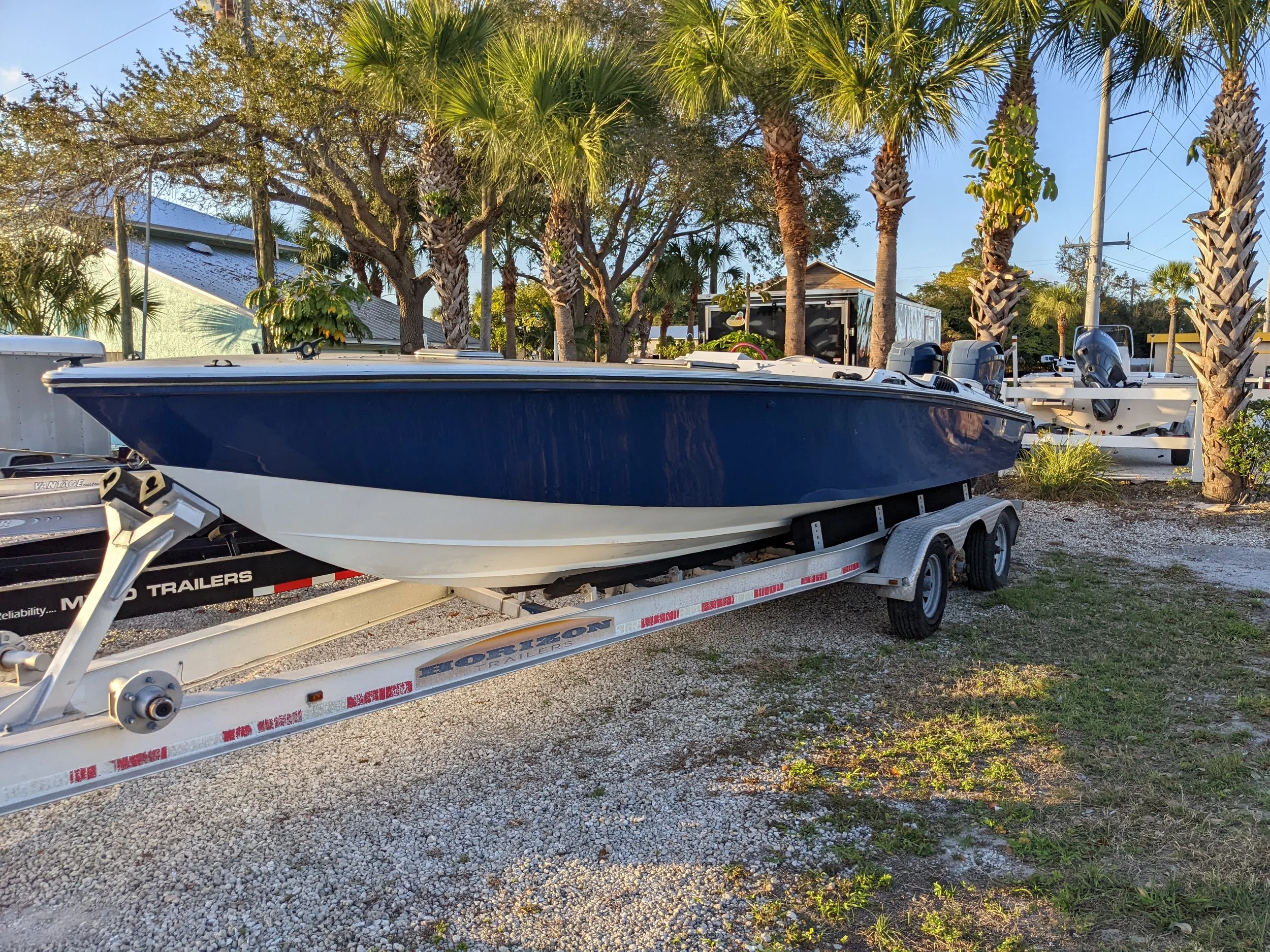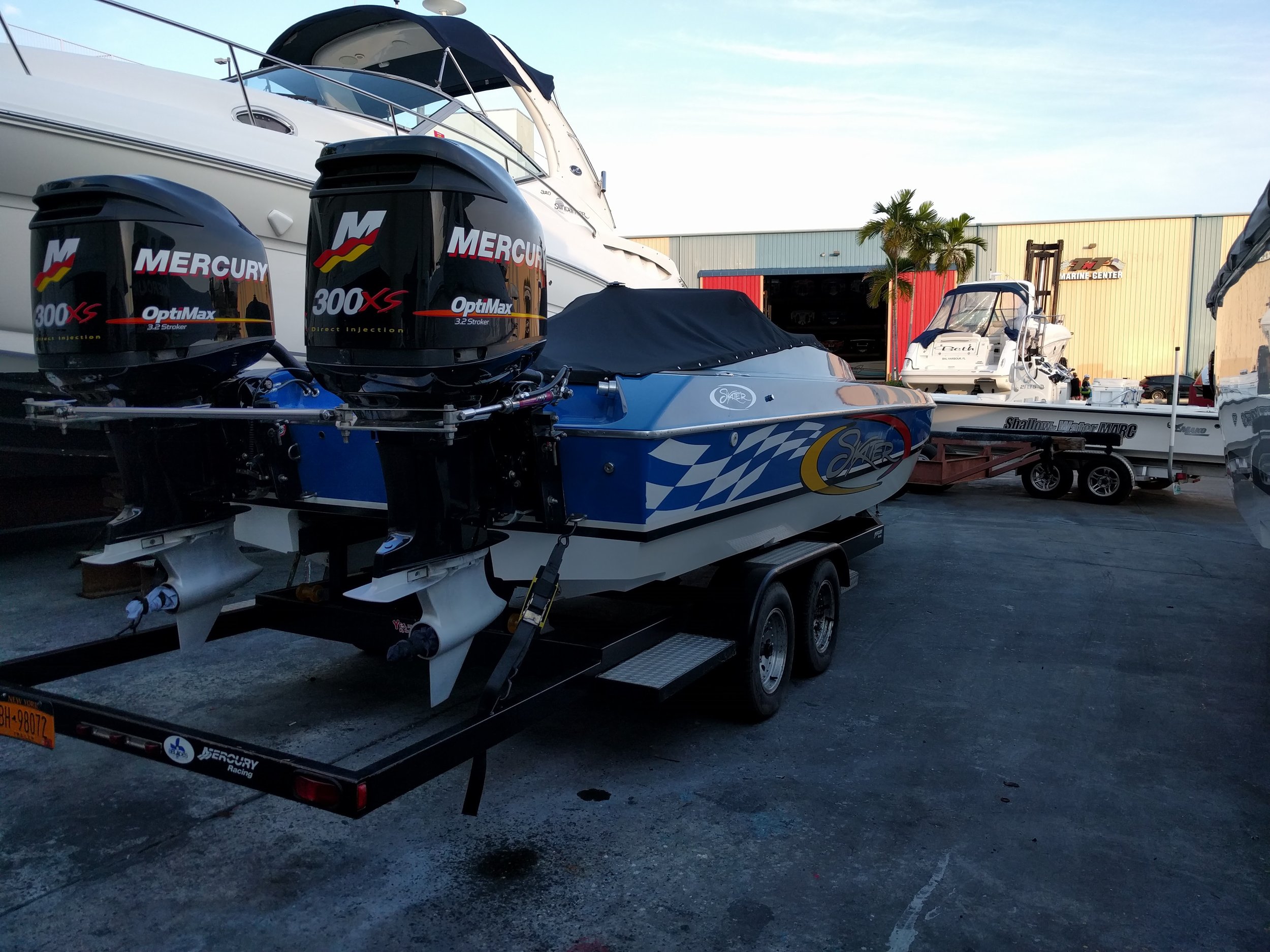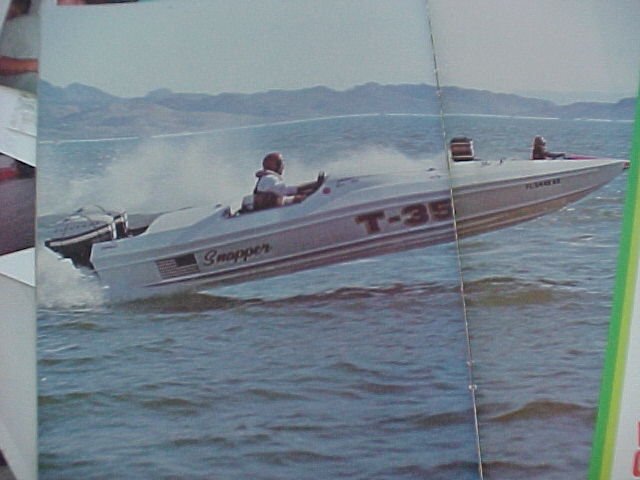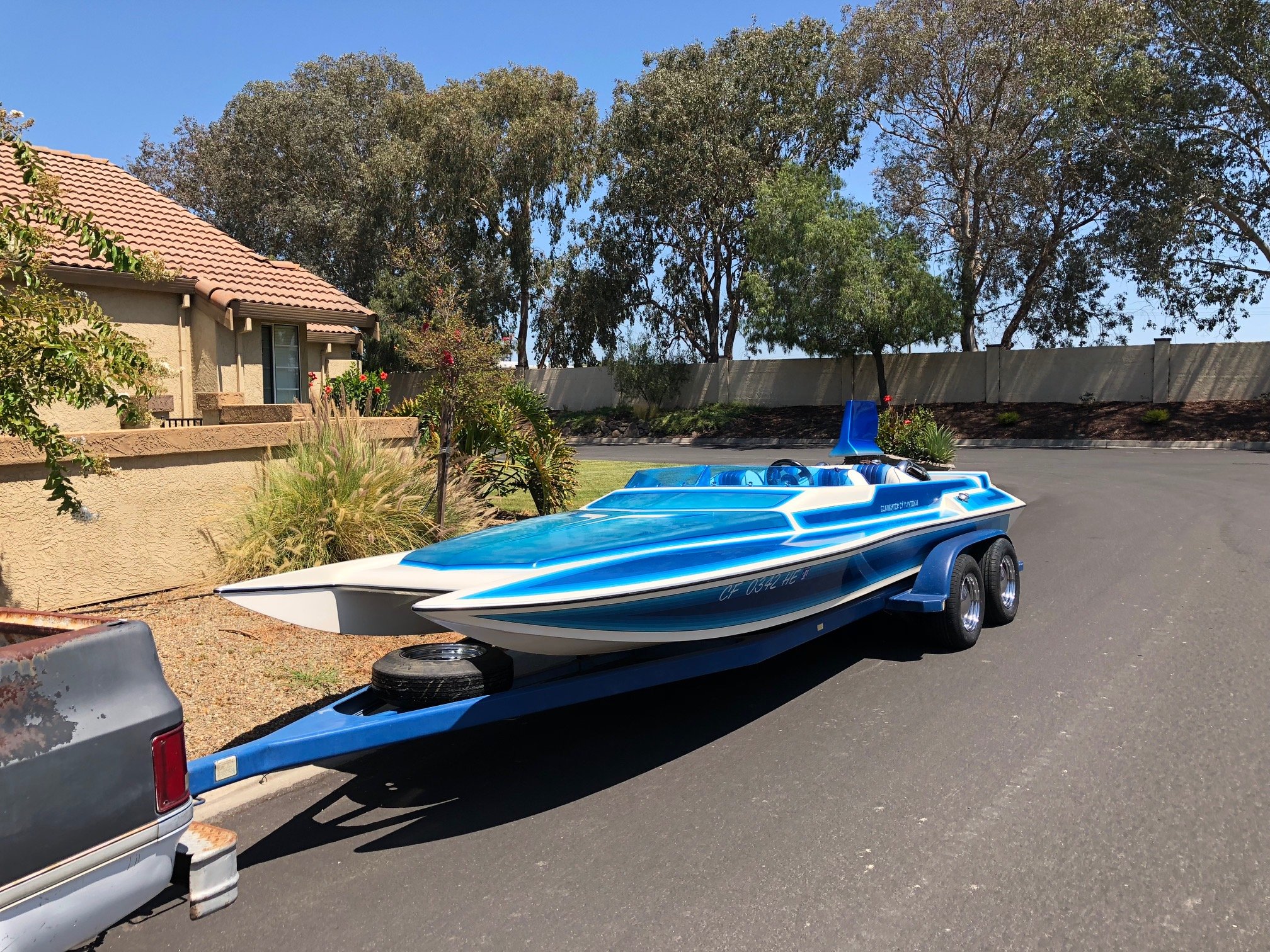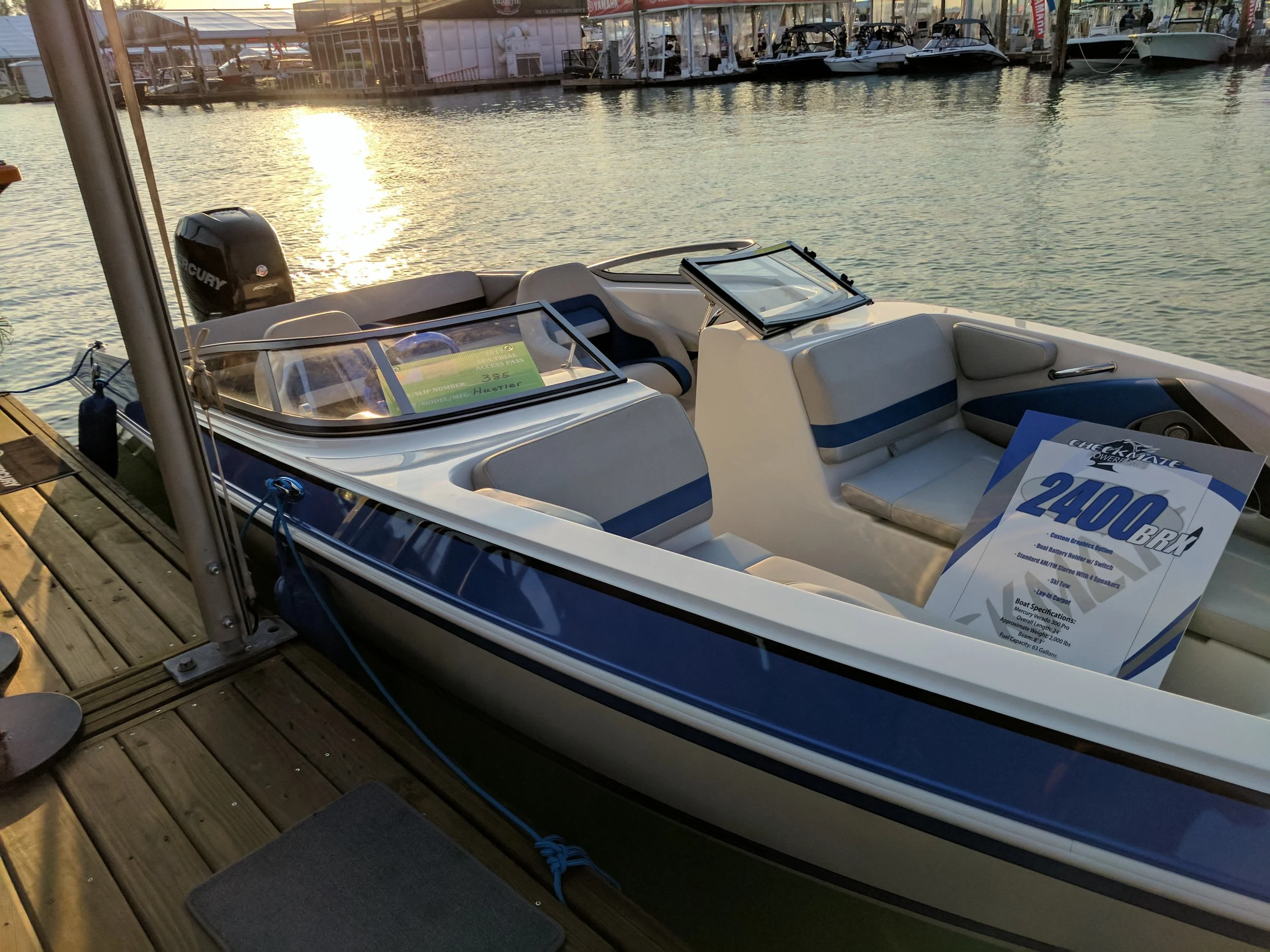The Most Copied Hulls: Boat Designs that Shaped the Industry
Because of the nature of boat building, there has always been an issue of copying designs. This is simply because it is much easier to make a mold from an existing boat than making a new plug with a novel design. A fresh design means testing, fabricating, testing and more fabricating. If you are starting as a manufacturer, especially when it comes to performance boats, design is a difficult process. Some of the most well regarded designs are either splashes of previous designs or heavily influenced by them. Let’s take a look at some of the most the most influential designs over the years and how they were copied or inspired by others.
I'm okay with "inspiration" but not outright copying. Do you think Boeing or Gulfstream has to design a completely original wing and fuselage with every new model? Of course not. There are principles of physics, we know certain design characteristics work, of course we're going to see similar hulls. Like I said, it's a gray area but there is a difference between copying and inspiration. Also keeping in mind when most of these boats were made, there were no computer design programs.
Skater 24 and 28
Admittedly, I’m not a cat guy but it’s only because I just don’t have much seat time in them and really love V hulls. But, it’s hard to argue how amazing cats can be in overall performance. In racing you see the most competitive and exciting classes are the catamaran boats in all HP ranges. For consumers, the outboard sport cats are very popular and it is easy to see why; effortless performance, practicality, and rough water capability.
A classic 24 Skater with twin 300XS. Influential in so many ways.
I mention the 24 Skater because although there are other boats from Skater, I feel like the 24 was a bit of a game changer and paved the way for the 28 and larger designs. When I talked to Peter Hledin one time at the Miami Boat Show, he mentioned the 24 was his favorite Skater. With that, you can see how influential Skater has been in the tunnel hull world. If you go back to the early days, Skater was a pioneer in the outboard catamaran market long before it was such a popular segment, so it seems obvious that many of the top manufacturers were heavily influenced by the early Skaters.
The smaller Skaters made way for the bigger ones and the 288 and 308 really shaped the future of the sport cat craze today.
Allison 15, GT 20 and XR 2002
When it comes to specific design, you could say the Allison hulls have been the most influential because many innovations are the standard for so many designs now. The pad bottom, the notch and other details are all used in performance V hulls. Also, Darris Allison has tested more designs than almost anyone I know of. You see it in the details, a radius pad to reduce drag, lipped running surfaces for lift and very detailed strakes for lift and tracking.
A rocket ship that changed the game. The Allison 15, fast with almost any power.
Many hulls take some of these cues, but often don’t have the details and particular features that really make the Allison hulls standout. Materials and build quality are other notable features of Allison. Darris was using advanced composites before most and really innovated the idea of monocoque construction. One thing to keep in mind is that all of these designs were hand crafted and tested countless times. In an age where computers rule the design world, it makes it that much more impressive.
The center steer XR 2002 is a race boat dressed up as a pleasure boat. Still one of the sleekest boats you’ll see.
21 Challenger, Eltro Boats
The 21 Challenger from George Linder might be one of the more specifically copied hulls ever made. One of the most revealing things is the simplicity of the hull, a 22 degree deadrise with a narrow pad, makes it a really good performing rough water boat. Basic but fast. For the boat itself, the design is timeless, it still looks fantastic. Clean straight deck lines with a low profile. You could say it’s a bit beamy for a modern boat, but it’s hard to argue how influential it was.
You know a design works when it just looks right. The 21 Challenger looks amazing. This is an unnamed splash.
The list of brands that copied this hull is too long but the original Challenger was made in 1976, and there are some small manufacturers still making this boat. This gives you an idea of the influence this incredibly popular hull had.
Before the boat was designed, George Linder and his partner raced an Eltro, which one might say influenced the Challenger 21. Eltro made very nice wood boats at the time, from race to pleasure. Like popular art, everything original is actually influenced by something else and that’s not a bad thing.
An old Eltro race boat. Beautiful lines and made of wood.
Sidewinder 16
The 16 Sidewinder is another classic that was copied numerous times. Some say the original Sidewinder was splashed from a 16 Glastron, but it definitely has a few differences. What made the small Sidewinder standout was its ability to do everything. Not necessarily very fast, it could handle a chop, run modest power, and was many people’s first boat.
The Sidewinder and its many copied versions were affordable and fun during a time when the average guy could buy one. I often said the seventies was a bit of a heyday for great boats that were also affordable. New performance boats are mostly the domain of the affluent now but back in the seventies and eighties, maybe up until the early two thousands, you could find affordable boats. More than most boats here, the 16 Sidewinder was among others a great example of good design that appealed to the masses.
A really rare Norwester 16, based on a Sidewinder 16 from the 70s.
Glastron GT 150 and CVX 16
Bob Hammond was a boat building genius, and Art Carlson was probably one of the most prolific and talented boat designers for a time. The Glastron GT 150 and CVX 16 are two little boats that made a massive impact on the industry. If one word could describe Glastron designs and later Art Carlson designs it would be “futuristic.” During a time when many boats were stealing cues from the automotive world, Glastron and Carlson moved marine design into the future with low profile hulls, and forwarded thinking interiors.
My Grandfather in an Excel Stingray with a Mercruiser 140 stuffed into it. A copy of the GT 150.
The boats were pretty fast, and they made a ton of them. Both the GT 150 and CVX 16 are among the more recognizable boats from Glastron and were copied heavily. There are plenty of other noteworthy Glastrons and Carlson designed boats but these two standout to me as truly classics that were the envy of their competition. They still look pretty damn cool.
One of the Glastrons used in the James Bond movie on display at the Peterson Automotive museum. Iconic in design and pop culture.
Eliminator Daytona 19, 21
Although center pod tunnels are less popular on the East coast, on the West coast, center pod tunnels are really popular. Early versions of center pod tunnels were often V hulls with inserts in the mold to form the sponsons. This was prevalent among the Mod VP racers. Laser and Hydrostream boats were early adopters. But, when it comes to popular lake boats, it’s hard to deny the influence of Bob Leach’s Eliminators. The early 19 Daytona and 21 Daytona really set the mark for cool fast lake boats. With their popularity, copies popped up everywhere and Eliminator became on of the bigger brands out west. Eliminator is under new ownership as of a few years ago and is going strong.
The quintessential California lake hot rod. Eliminator Daytona’s influenced many boat builders.
I would say the 19 and 21 were the most copied and probably the 21 is the most copied overall. One great thing about the Eliminator Daytonas was that they adopted to all the trends; jet boats, outboards, and big power sterndrives.
Formula 233
If you really want to get to influential copied boats you have to talk about the Formula 233 and it is no secret it that it was prolifically copied. Jim Wynne designed it during the Aronow era of Formula. One reason it was so popular is it’s really simple, the 233 was one of the best overall rough water 23’ boats of all time. It’s deep deadrise, with a really deep entry and high freeboard made it seem like a bigger boat. It was heavy, but ran really nice. From old race boats, to sport boats and center console boats, the 233 is ubiquitous. Not only was the Formula 233 copied extensively, many have been converted to outboards with brackets attached. Not many hulls under 25’ had a bigger impact than the 233.
From cruisers, center consoles to race boats, the Formula 233 design was often duplicated.
28 Magnum and 24 Cigarette
On the east coast, especially in South Florida, many compact offshore boats were born out of the revolutionary Harry Schoell designed 28’ with an 8’ beam, which was narrow at the time. Many earlier Donzi 28’ race boats from Aronow were a little wider with approximately 10’ beams. Schoell and Aronow had seen some European designs and knew the narrower beam would be faster and better in rough water, using a straight 24 degree deadrise. They were right, the 28’ by 8’ race boats they built were fast, and they used the same design to create the 28’ Maltese Magnum and other future sport boats. The 27’ Magnum is just a cut down 28’ from what I understand.
This is a 27’ Magnum but you see the influence of this design in countless performance boats, from the original 28’8” hull raced by Aronow. Narrow and with a deep entry it is an incredible wave slicer.
With a great design comes copies, and there are 27 and 28 hulls using the same design, including the classic Cigarette 28 SS and many others. The 27 Magnum, 27 Squadron X11 all owe their designs to Schoell; those were all Aronow projects and others copied it around the same time. Although the origins are less clear, the popular 24’ by 7’ and 8’ hull configuration with the 24’ Cigarette Firefox, appear to be cut down versions of that original design. Pantera, Banana Boat Company, Jaws, and many others all were at least heavily “inspired” by the Schoell / Aronow Magnums.
This classic 24 Cigarette was on display at the 2022 Miami Boat Show and it turned more heads than any of the multi engine center console sandbar booze transporters.
Donzi 16
The original Donzi 16 was a Jim Wynne designed Formula 17 that was shortened. And without doubt it was and is so popular because of its sleek simple design. A fun little boat that suited the smaller engines of the sixties and seventies, the little Donzi punched above its weight. Although it wasn’t copied as much as others on this list, there is no question it might be one of the more influential in terms of overall impact. These were still being made up until recently and although they are limited in some ways, they are great fun for cruising the bay in style. The Donzi brand has many memorable models but is any other model more symbolic of the brand than the 16? I don’t think so.
This is a Donzi 18 Classic, which is the bigger brother of the 16. These smaller boats really defined Donzi as a brand early on, and they all came from the original Jim Wynne design.
STV
When Roark Summerford experimented with the Laser race boat he was running by making a new design that removed the inner running surface, creating a center pod style tunnel, he changed small performance boats forever. The Laser and STV LTV, were revolutionary and incredible performers. With amazing lift and stability, an LTV can run 80+ MPH with a 150 HP setup right. The LTV is probably my favorite because it looks amazing after all these years, with a beautiful deck design.
The STV Euro is definitely a head turner
Later, STV made the incredible ProComp with a really “race” inspired deck and the popular Euro that sat 4 people. The STV River Rocket is the quintessential STV to me, with a narrow cockpit and high engine cowling for aerodynamics, they are one of the wildest looking performance boats ever made.
This design was revolutionary and a huge influence on Mod VP boats along with future STV designs.
Hydrostream
Last but not least is Howard Pipkorn’s Hydrostream boats. Some of the most unique looking boats ever made were built by Pipkorn in Minnesota at Hydrostream boats. The Vector, Ventura, Viking and others really embodied the affordable performance boat. Some were for racing, some for pleasure and many ran great with modest power, making them very versatile.
Every Hydrostream had the most unique and incredible shapes and curves.
When you look at the hulls of Hydrostream’s during the 60s and 70s it’s easy to say Pipkorn was ahead of his time. I would say complex was the word, he was always experimenting with pad shapes and design, with really unique configurations. I do love some of the smaller hulls, although they are all small by today’s standard, but you can run a Vixen, Viper or even a Ventura, all 16’ or under, with modest power and still be really fast and economical.
As radical as the hull designs were, what doesn’t get talked about enough is the deck design. Wild curves and concave decks, wings and wrap around windshields made the Hydrostreams really look different. With so many models and great sales numbers in the 70s and 80s, it’s no wonder they have a cult following. If there is a Mount Rushmore of boat designers, Howard Pipkorn is surely on it.
An old brochure for the Hydrostream Vector
Looking back, there is so much copying and influence in the boat industry it’s hard to keep track of it all, but you have to give credit to those that came up with original designs. Boat building is hard, the art of the design and how it performs is an extremely tedious process. Now, computers help in a big way as you can do all sorts of models and testing with CAD. Some of these old hand made hulls still stand the test of time though.

